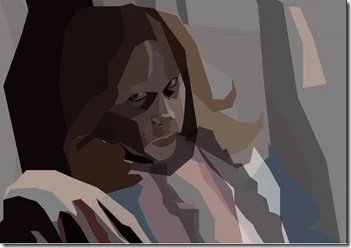Good Day World!
I have a guest post for you today that I think will take your breath away! Seriously, when the movie Exorcist came out it scared the crap out of a whole generation.
It was the last horror film my wife ever watched! Freelance writer, Alex Smith, talks about this iconic horror film on it’s 40th anniversary:
(Art by Stephen Whitmore from DirectTVDeal.com)
By Alex Smith
“When it was released in 1973, The Exorcist terrified audiences all over the world in a way that no film had before. It tops virtually all lists of the scariest movies ever and changed forever the way horror films are regarded both by movie studios and audiences. Although Rosemary’s Baby was released the year before, it was the critical and commercial success of The Exorcist that made it a game changer for the genre.
Money talks in Hollywood, and the box office success of “The Exorcist” forced producers to look at horror films in a completely new light. The film was not only the biggest hit of 1973, it was financially speaking the most successful horror film of all time, raking in over $2 billion in today’s dollars. Its box office numbers were eclipsed by “Jaws” in 1975, but it still has the highest numbers for any R rated film. Horror films had long been thought of as low budget and relatively safe bets for producers, but now they could look at them as major vehicles for directors and acting talent.
In hindsight the decision by William Friedkin to direct the movie was a good one, but it must have seemed like a major gamble at the time. He was coming off an Oscar win for his work on The French Connection and could have had his pick of projects to work on. In a sense, the attraction of a horror film for an artist is easy to understand. One of the primary goals of art, particularly film, is to make a connection with the audience and provoke an emotional response, and fear is the most visceral emotion of all. After the success of the film, both commercially and critically, talent on both sides of the camera would be less reluctant to take on a horror project.
The critical acclaim the movie received was also unparalleled for a horror film. It was the first of the genre to ever be nominated by the Academy for Best Picture, and was ultimately nominated for 10 awards in total. Critics were divided on the film’s merits, but all of them took notice. This level of attention changed the way that audiences perceived horror films. They were no longer merely date movies that provided the odd heart stopping moment, but a legitimate cinematic art form.
Horror films had traditionally fallen into two categories. There were monster movies like The Wolfman and Frankenstein, and there were the slasher type films that still make reliable box office cash cows. The Exorcist along with Rosemary’s Baby the year before and The Omen three years later added a new dimension. These films tapped into the types of deep rooted fear that give even agnostics sleepless nights. Audiences were no longer experiencing vicarious fear for the characters on screen, but were feeling uncomfortable in a very personal way.
The religious nature of the film was also very divisive, and a release date one day after Christmas heightened reactions. Billy Graham claimed that the film itself was possessed, while the Catholic Church called the film “deeply spiritual”. Religious controversy is always fodder for the media, and Walter Cronkite devoted 10 minutes of his nightly news broadcast to covering the reception to the film. This is another example of how the film changed cinema and how movies are promoted: The Exorcist became a cultural phenomenon that people were eager to experience so they could join the conversation about, and Hollywood studios learned that controversy was something to embrace rather than run from.
The enduring legacy of The Exorcist is that audiences want to be terrified, and that filmmakers can achieve spectacular results when they step away from the safety of the tried and true. Horror films have become the testing ground for new ideas, often taking cinema in completely different directions. Without the success of The Exorcist studio executives may not have been willing to back the wide release of The Blair Witch Project in 1999. That film went on to turn a $25,000 production budget into a $248 million box office return and pioneer the found footage genre.”
Author Bio: Alex Smith is a freelance TV and film blogger for DirectTVDeal.com. He is a lifelong horror fan with a particular interest in the films of the 1970’s and 80’s, psychological horror, and anything sci-fi. In addition to his writing, he firmly maintains the belief that having your pants scared off is the best cardio.
Note to readers: If you have a guest post you’d like to share on this blog, please contact me at richarddavestancliff@gmail.com . Limit one post per month.
Time for me to walk on down the road..




No comments:
Post a Comment